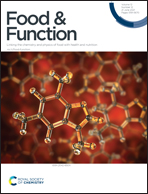Ginsenoside CK induces apoptosis of human cervical cancer HeLa cells by regulating autophagy and endoplasmic reticulum stress
Abstract
Ginsenoside CK (GCK), as a metabolite of ginsenoside Rb1, has been studied for its anti-cancer activity. However, its in-depth anti-cancer mechanism on cervical cancer (CC) HeLa cells has not been fully elucidated. This study found that GCK inhibited the proliferation of CC HeLa cells and caused alteration in cell morphology with an IC50 of 45.95 μM. At the same time, GCK treatment blocked the cell cycle in the G0/G1 phase, elevated the reactive oxygen species (ROS) level, decreased mitochondrial membrane potential (Δψm), contributed to Ca2+ leakage, inhibited HeLa cell metastasis, and stimulated the key markers related to apoptosis, mitochondrial and endoplasmic reticulum pathways. GCK altered the regulation of the Caspase family, Bak/Bcl-xl and down-regulated the endoplasmic reticulum pathways (PERK and IRE1α). Starting from flow cytometry and the protein level, we found that autophagy inhibitors inhibited autophagy while promoting apoptosis, and apoptosis inhibitors reduced the rate of apoptosis while promoting autophagy, which proved that GCK can be used as a suitable novel natural product for CC treatment.



 Please wait while we load your content...
Please wait while we load your content...